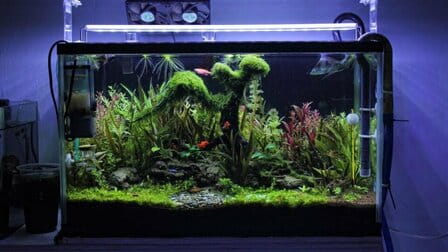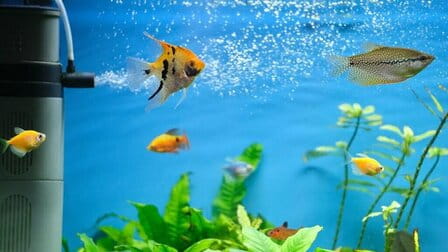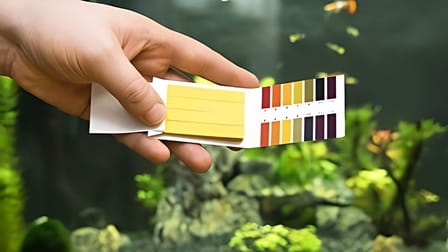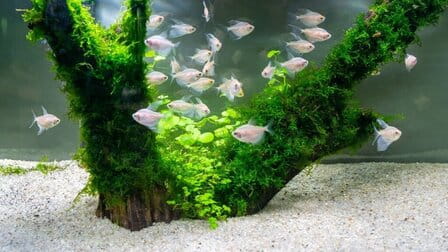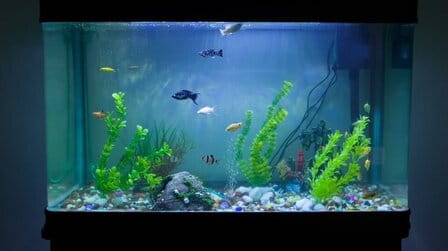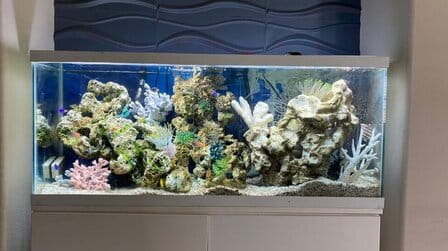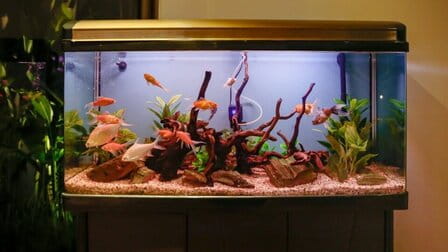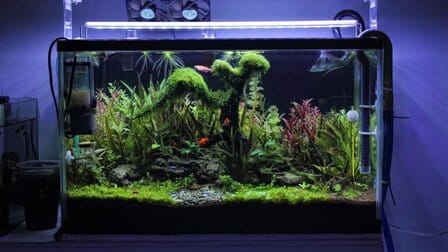Did you imagine that acquiring a fish would be a less demanding emotional support for you than getting a cat or a dog? And now you find yourself looking out methods for cleaning the fish tank's sand. That's totally ok! For the relaxing and restoring experience they provide to your life, these lovely animals are worth all the trouble. Explore the article in depth to discover the many techniques for cleaning aquarium sand and gravel, as well as the stages to follow and advice to keep in mind. Here are some steps on list how to keep aquarium sand and clean.
How to Keep Aquarium Sand and Clean
First off, you should probably clean the aquarium if you have an old fish tank and are replacing the fine sand substrate in it. To remove the substrate and thoroughly clean the tank, use fish scrapers. The aquarium sand has to be prepared in order to receive your new fish companion. There are many wonderful sand alternatives available for your aquarium. But, it's crucial to clean the sand before adding it to the water tank to guarantee that it won't cause the water to become murky and foggy. The following steps in list how to keep aquarium sand and clean:
Use a quality filter
Using a quality filter is the first step on the list of how to keep aquarium sand and clean. The first step in keeping aquarium sand clean is to ensure that you have a quality filter installed in your aquarium. The filter is responsible for removing waste and debris from the water, which can accumulate on the bottom of the tank and in the sand over time.
There are different types of filters available on the market, including hang-on-back (HOB) filters, canister filters, sponge filters, and others. Choose a filter that is appropriate for the size of your aquarium and the type of aquatic pets you have.
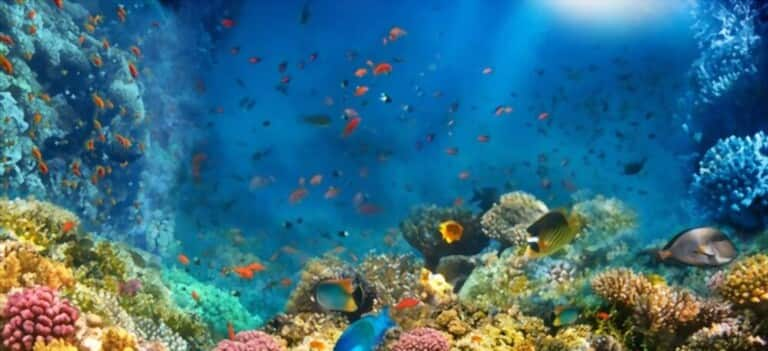
The flow rate of the filter should also be considered, as it should be sufficient to keep the water circulating and the debris moving towards the filter. A good rule of thumb is to choose a filter that has a flow rate of at least four times the volume of your aquarium per hour. For example, if you have a 20-gallon aquarium, choose a filter with a flow rate of at least 80 gallons per hour.
Make sure to clean or replace the filter media regularly, as it can become clogged with debris and reduce the efficiency of the filter. Follow the manufacturer's instructions on how often to clean or replace the filter media.
Regular water changes
Regular water changes are an essential part of keeping aquarium sand clean. Water changes help to remove excess debris and waste, as well as maintain the chemical balance of the water.
The frequency and amount of water changes will depend on the size of your aquarium, the number of aquatic pets you have, and other factors. As a general guideline, aim to change 10-20% of the water in your aquarium every 1-2 weeks.

To perform a water change, use a siphon or a gravel vacuum to remove water and debris from the bottom of the tank. Use a water conditioner to treat the tap water before adding it to the aquarium to remove any chlorine, chloramine, or heavy metals that may be harmful to your aquatic pets.
Be sure to match the temperature and pH of the new water to that of the aquarium before adding it. You can use a thermometer and pH test kit to ensure that the new water is at the correct temperature and pH.
Regular water changes can help to prevent the buildup of harmful substances in the aquarium sand and water, keeping your aquatic pets healthy and happy.
Vacuum the sand
Vacuuming the sand regularly is an important step in keeping it clean. Over time, uneaten food, debris, and waste can accumulate on the bottom of the tank and in the sand, which can lead to poor water quality and health issues for your aquatic pets.

To vacuum the sand, use a gravel vacuum or siphon to remove any debris and waste that may have settled on the bottom. Place the vacuum over the sand and move it around slowly to suck up any debris. Be careful not to disturb the sand too much, as this can release harmful substances into the water.
It's a good idea to vacuum the sand once a week, or more frequently if you have a large aquarium or a lot of aquatic pets. The frequency of vacuuming will also depend on how much your aquatic pets eat and how much waste they produce.
When vacuuming the sand, be sure to avoid disturbing any plants, decorations, or other items in the tank. You may also want to turn off any filters or powerheads to prevent debris from getting sucked into the filter intake.
Regular vacuuming can help to prevent the buildup of harmful substances in the sand, keeping the water clean and healthy for your aquatic pets.

Avoid overfeeding your fish
Overfeeding your fish is a common mistake that many aquarium owners make. When you overfeed your fish, excess food particles can fall to the bottom of the aquarium and contribute to the build-up of debris in the sand. This can lead to poor water quality, which can be harmful to your fish and other aquatic animals.
To avoid overfeeding your fish, it's important to feed them the right amount of food at the right frequency. The amount and frequency of feeding will depend on the type of fish you have, their size, and their dietary needs. Generally, it's recommended to feed your fish small amounts of food several times a day, rather than one large feeding.
You can also monitor your fish to see if they are being fed the right amount. A good rule of thumb is to feed your fish only as much as they can eat in a few minutes. If there is leftover food after feeding, it's a sign that you are overfeeding your fish.
By feeding your fish the right amount of food and avoiding overfeeding, you can help to maintain a clean and healthy environment for your aquarium. This will help to ensure the well-being of your fish and other aquatic animals, as well as the beauty of your aquarium sand.
Add snails or shrimp
The next step on the list of how to keep aquarium sand and clean is adding snails or shrimp. Adding snails or shrimp to your aquarium can help to clean up any leftover food and other waste materials that may be in the sand.
Perform water regularly
Regular water changes help to keep the water quality in your aquarium healthy. During water changes, be sure to vacuum the sand to remove any debris that may have accumulated.
Avoid using chemical cleaners
Avoid using chemical cleaners or detergents to clean the sand, as these can be harmful to your fish and other aquatic animals.
Monitor water parameters
Keep an eye on the water parameters in your aquarium, such as ammonia, nitrite, and nitrate levels. High levels of these substances can indicate a build-up of waste materials in the sand and water, and may require additional measures to keep your aquarium clean.
By following these tips, you can maintain a clean and healthy environment for your aquatic pets, while also enjoying the beauty of your aquarium sand.
Conclusion
We hope we have answered all of your questions if you have read this post all the way through. And good luck if you already have a fish and are working hard to care for it. Keep in mind that you must clean aquarium sand right away. Do you want those priceless animals to perish? Hope that the above information on the list of how to keep the aquarium's sand clean is useful for you.

